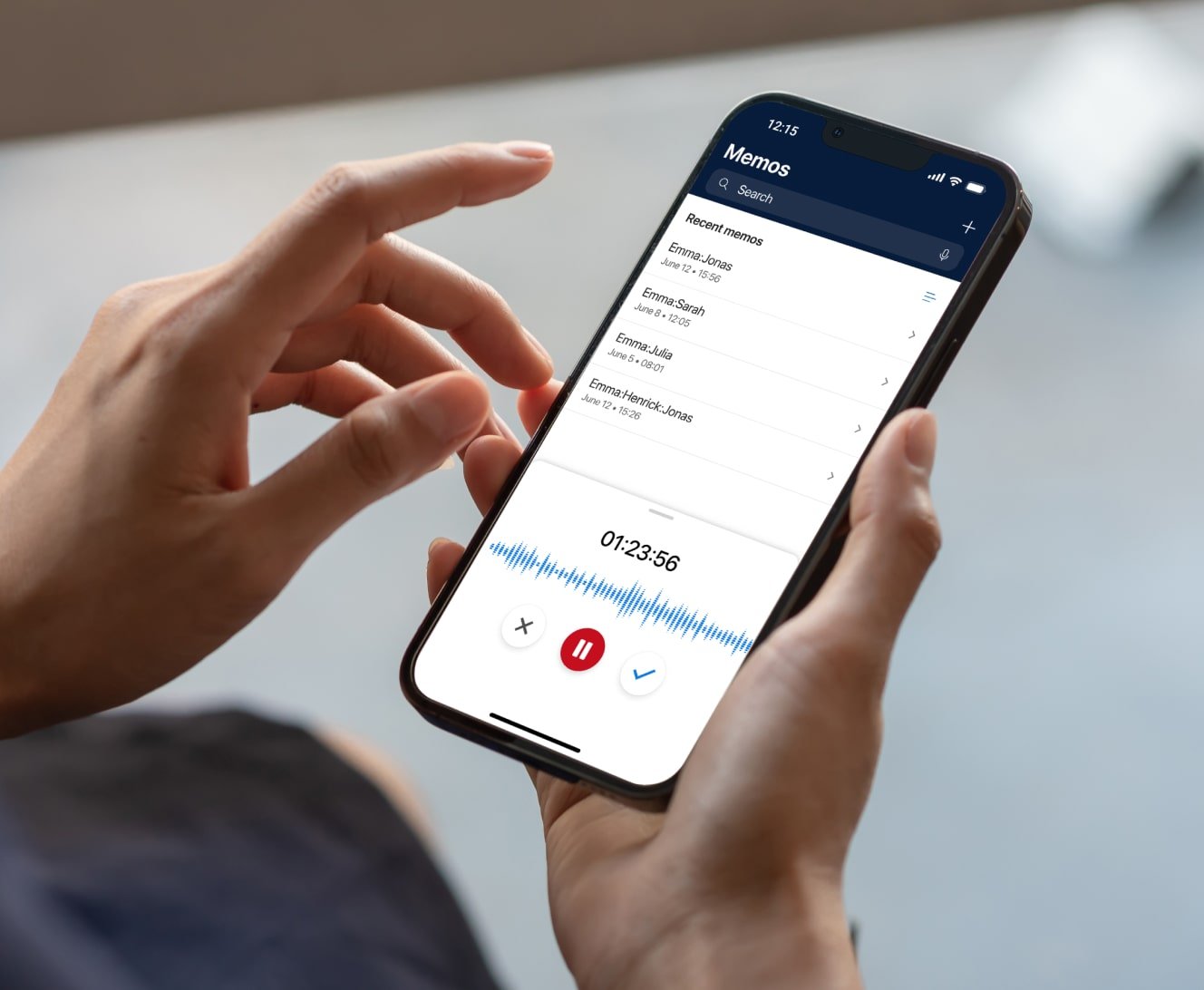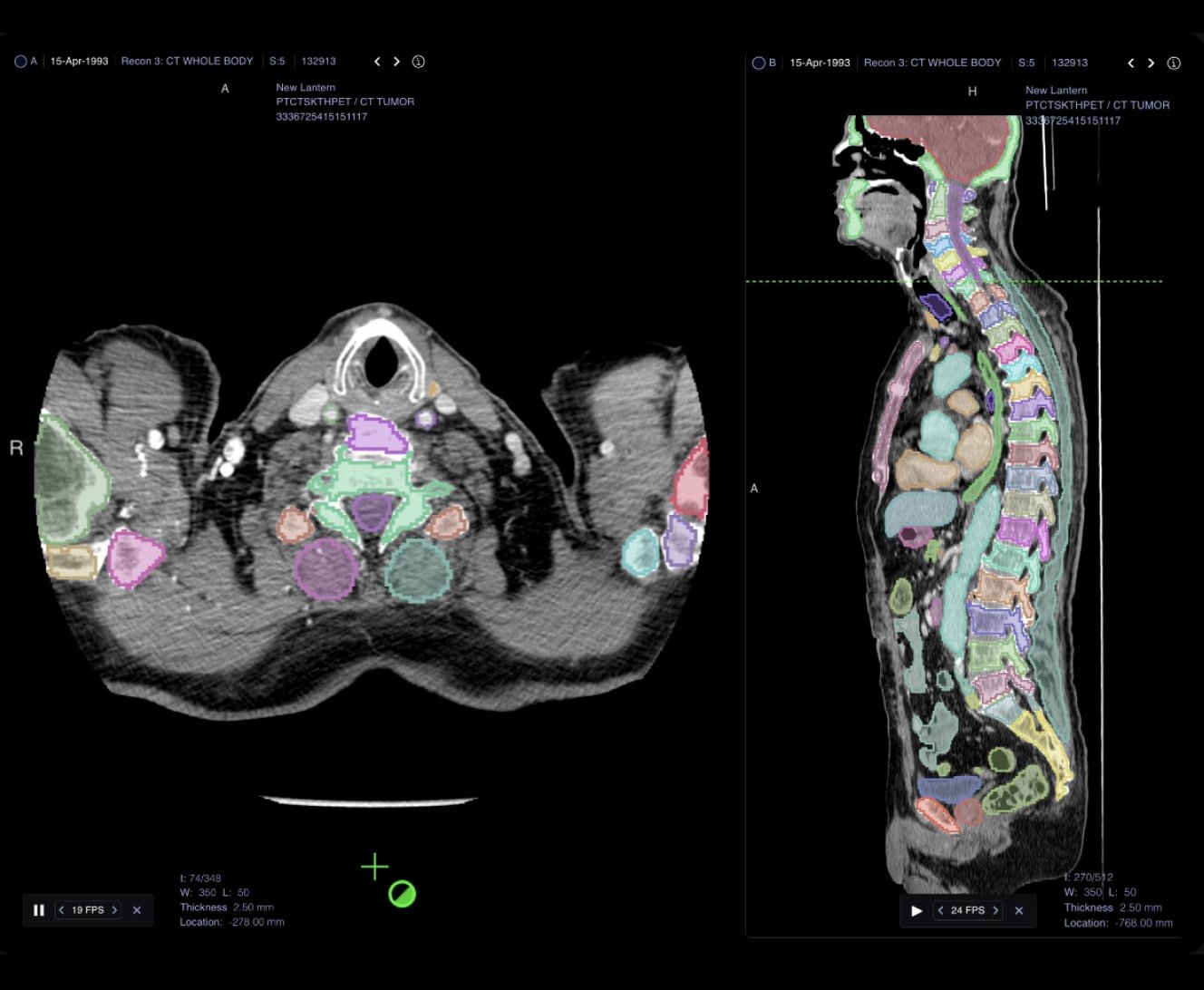Flexperto GmbH
Integrated Meeting Journeys: Redefining Preparation, Flow, and Follow-through
AI
B2B
Fintech
Product Design
SaaS
UX/UI
User Research
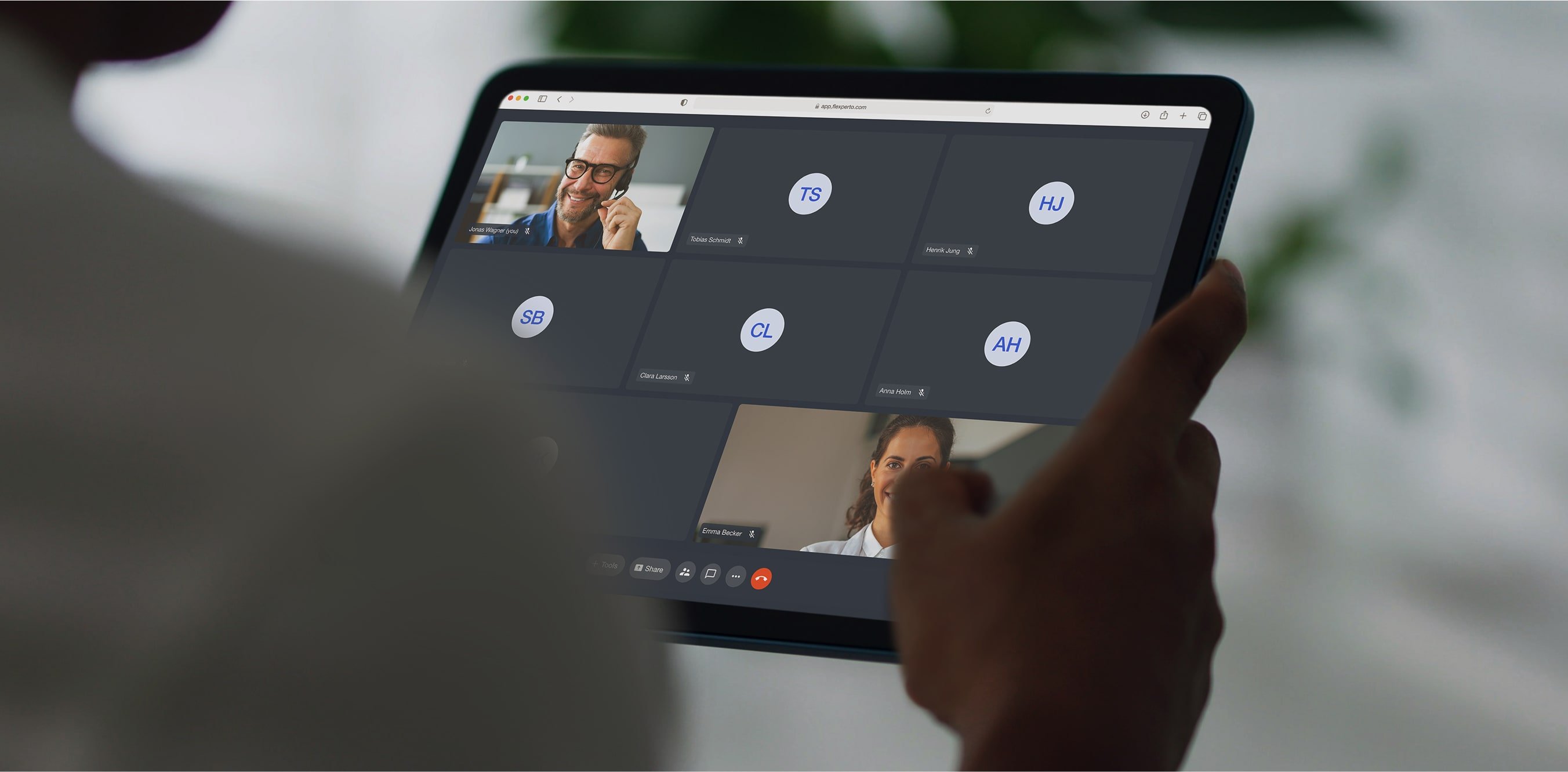
Company
Headquarters
Berlin, Germany
Role
Product Design
Timeline
2021-2025 (Full-time)
Flexperto is a German B2B SaaS fintech that empowers enterprise sales agents - particularly in the banking and insurance sectors - to manage customer appointments and communication with ease. Trusted by over 100 leading enterprises across Europe and the DACH region, Flexperto provides a centralized platform designed specifically for 1-on-1 customer interactions. It equips sales consultants with everything they need to build and maintain strong relationships online - from scheduling and messaging to video calls and e-signatures - all in one seamless interface.
Flexperto's mission is to remove friction between sales consultants and their customers. We partner with leading European banks and insurance providers to offer a digital communication layer for 1-to-1 customer interactions. Flexperto transforms traditionally in-person sales processes into seamless digital experiences.
Core features include:
- Scheduling Calendar – Lets customers book appointments based on real-time consultant availability.
- Online Meetings – Secure, browser-based video calls powered by WebRTC.
- E-Signature – Enables consultants to create custom documents and collect legally binding signatures.
- Omnichannel Messenger – Centralizes communication across SMS, WhatsApp, Facebook Messenger, and other popular channels.
As a solo designer at Flexperto, I’ve been responsible for:
- Leading the redesign of Flexperto’s platform to improve functionality and user experience, later integrating AI for smarter, more intuitive interactions
- Grounded design decisions in user research - conducting interviews, surveys, and analyzing behavior with Heap Analytics
- Optimizing onboarding flows to boost user engagement and drive product adoption
- Collaborating closely with product managers and developers to align design with business goals throughout the development lifecycle
- Streamlining the design-to-development handoff to ensure timely MVP delivery
- Building and maintaining a scalable design system to ensure visual and functional consistency across the product suite
Context
As Flexperto grew during and after the pandemic, video meetings became the new standard for customer communication across industries. Experts began to rely heavily on digital appointments, not just for convenience, but as the primary touchpoint with customers. To support this shift, our challenge was to evolve the in-meeting experience from a static video call into a professional and fully integrated collaboration space - one that users wouldn’t have to supplement with other tools.
Over the past two years, we’ve rolled out a series of updates to improve this experience, with AI-powered features being the most recent additions. This case study explores key elements that shaped the improved meeting room experience.
Project
In the early days of Flexperto, the meeting experience was primarily designed for simple video consultations - a lightweight, browser-based solution that met the immediate needs of remote customer appointments. As demand grew rapidly during the pandemic, especially in regulated industries like insurance and finance, the core meeting environment began to show its limits.
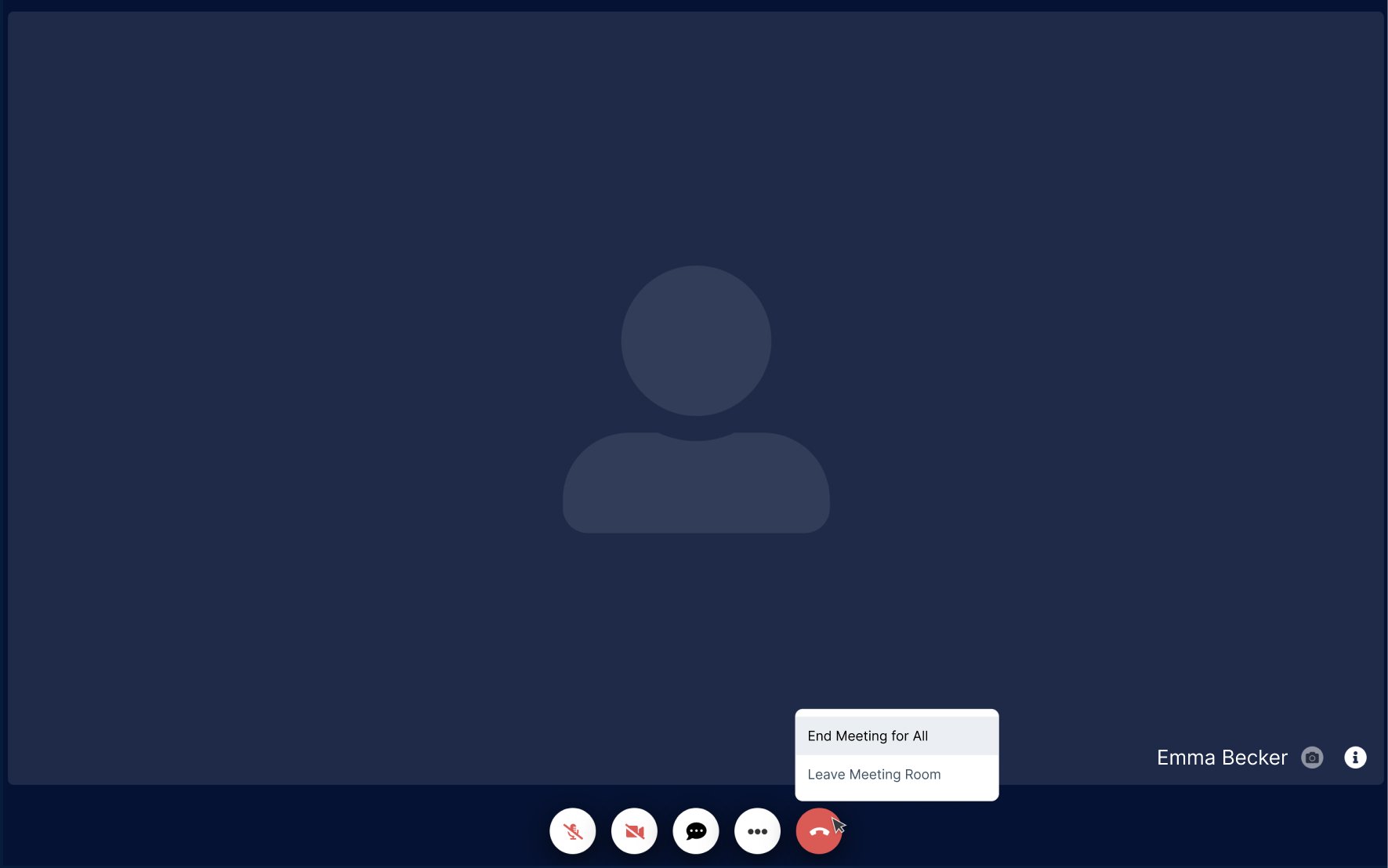
Meeeting room UI at its earlier stage.
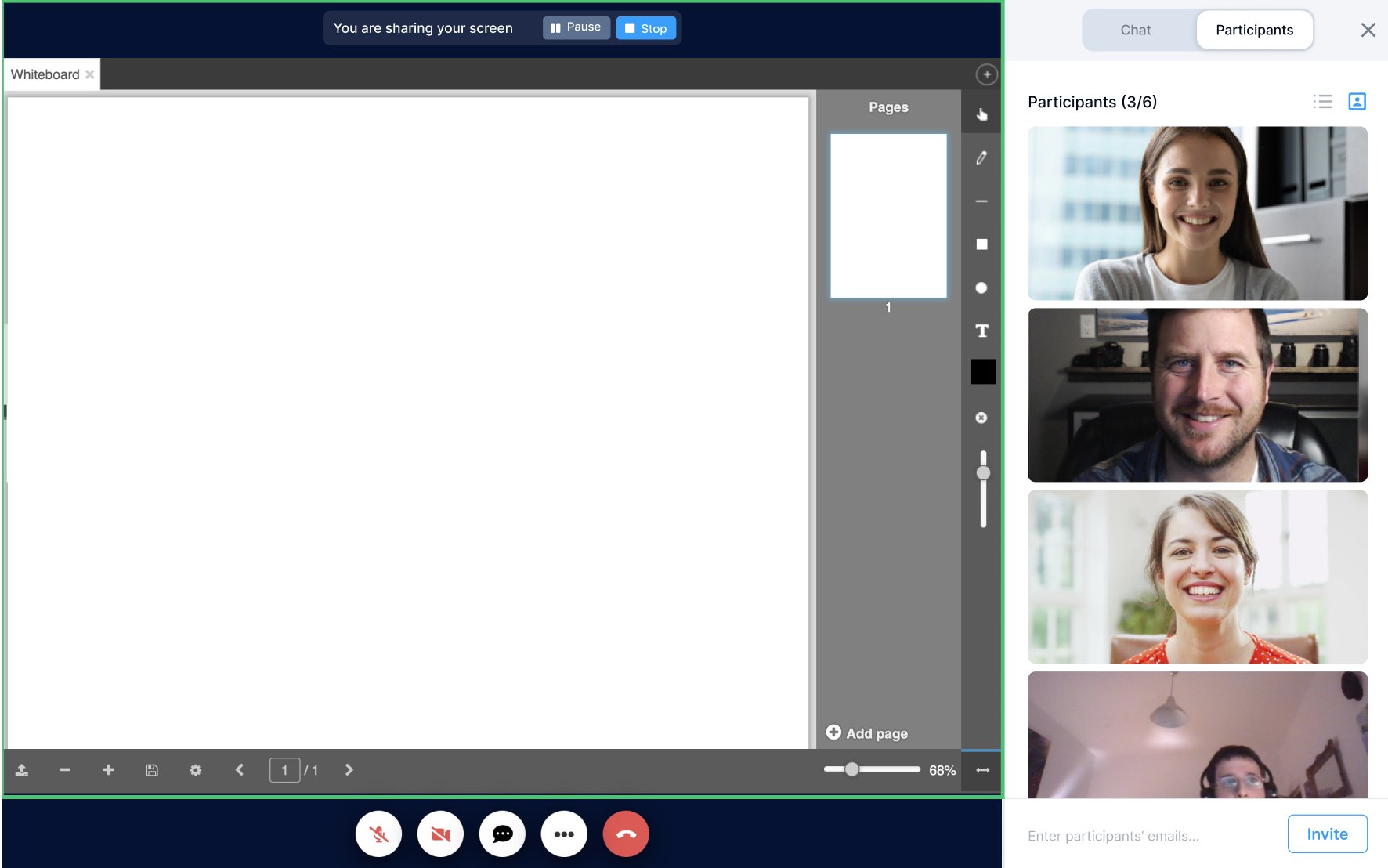
The whiteboard feature was used by experts to share and highlight certain areas of pdf documents live.
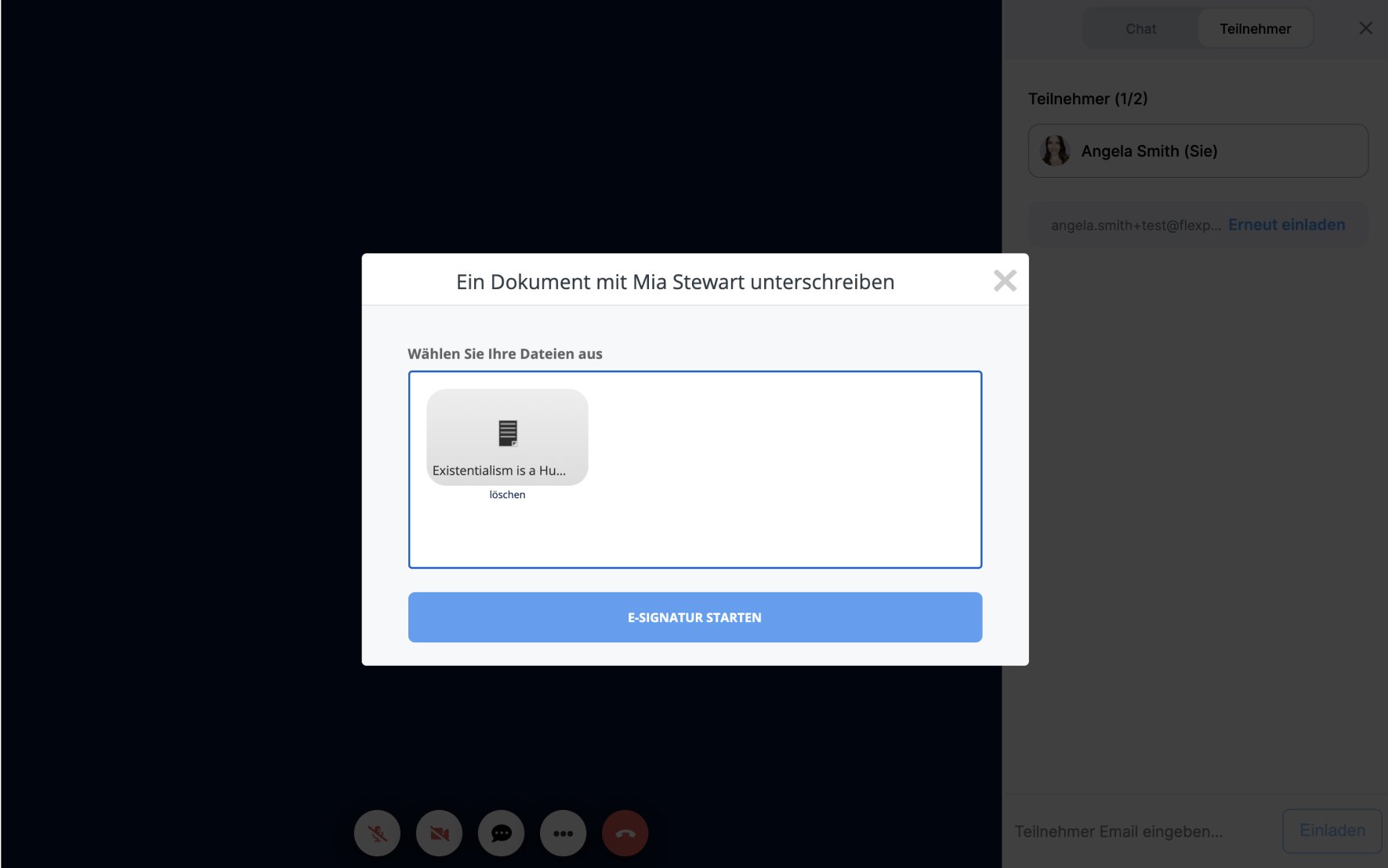
Uploading a file for E-Signature sessions in the meeting room at its earlier stage. A multi-step, time consuming action.
Research & Discovery
Through data analysis and customer feedback, we found that users relied on Flexperto for scheduling and e-signatures, but many turned to Teams or Zoom for the actual meetings. This meant lost time and inconsistent workflows. Therefore, we aimed to streamline their workflow by making the meeting room a part of a seamless, all-in-one “perfect sales meeting” tool.
To define what a “perfect” sales meeting looks like, I mapped the expert and customer journey before, during, and after meetings together with PMs and Customer Success. Through customer calls, surveys and data, we uncovered pain points and workflow gaps across our core industries such as insurance, banking, and telecom.
Key insights and user needs:
- Contracts are central. Signing must be frictionless and available wherever needed.
- Consistency matters. Experts need reusable meeting structures (agendas, templates, pre-loaded documents) so recurring appointment types can be run more efficiently and with a professional, consistent experience. → In short: Standardized meeting flows save time while ensuring a reliable customer experience.
- Documentation is a burden. Experts spend too much time manually collecting, writing, and organizing notes. → In short: Automating repetitive tasks frees experts to focus on the actual consultation.
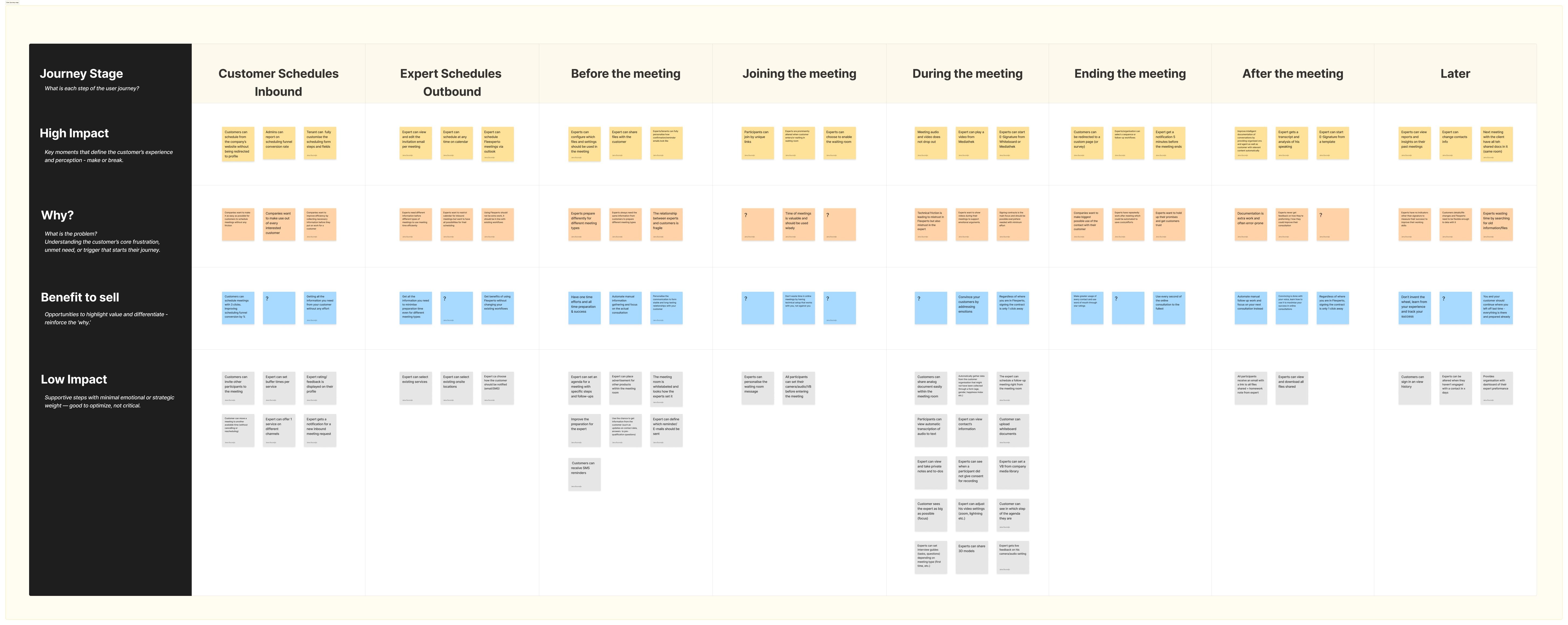
Risks
- Experts continued preparing on paper or other platforms due to lack of in-tool preparation features.
- Lack of customization led to inconsistency in meeting quality.
- Users reported switching to alternative platforms for meetings due to limited flexibility and features.
- Fragmented workflows created a disconnect between preparation and execution.
Solutions with high impact
Based on these findings, I redesigned the meeting room with a strong focus on efficiency, consistency, and trust-building.
- Intergrated E-Signature where experts can seamlessly view and initiate e-signatures directly from the meeting room - whether via the whiteboard or mediathek.
- Mediathek & Meeting Templates. To cut down on repetitive preparation, I designed reusable templates with pre-selected documents, agendas, and note-taking. This will give experts a consistent structure for different meeting types while keeping all client information in one place, ready for follow-ups.
- Introducing AI-powered documentation to the meetings. Real-time transcription, AI summaries, and suggested next steps will reduce manual note-taking and ensure nothing gets lost - improving productivity and accuracy.
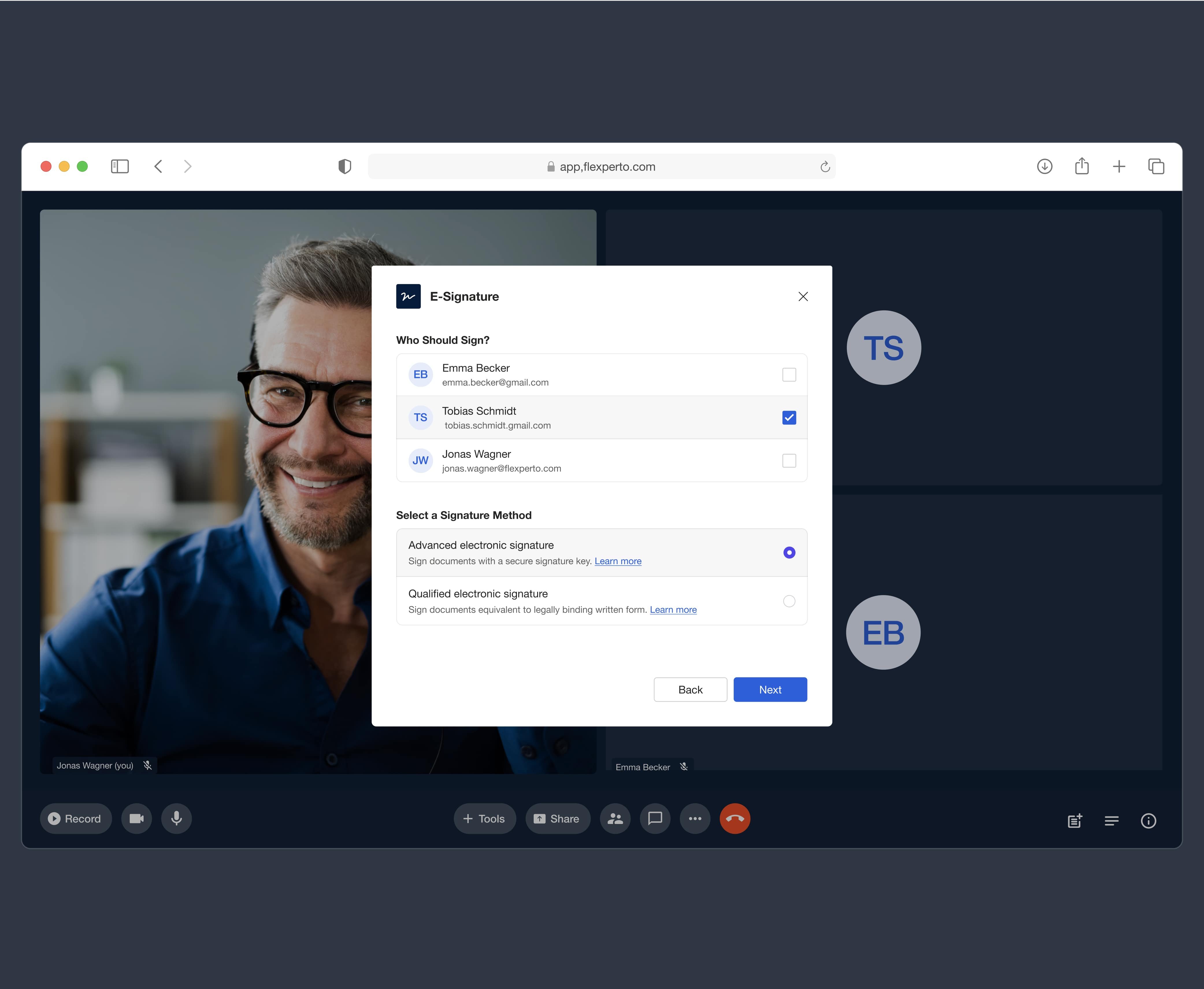
The expert is able to choose signees, signature method and the file to be signed - with only a few clicks.
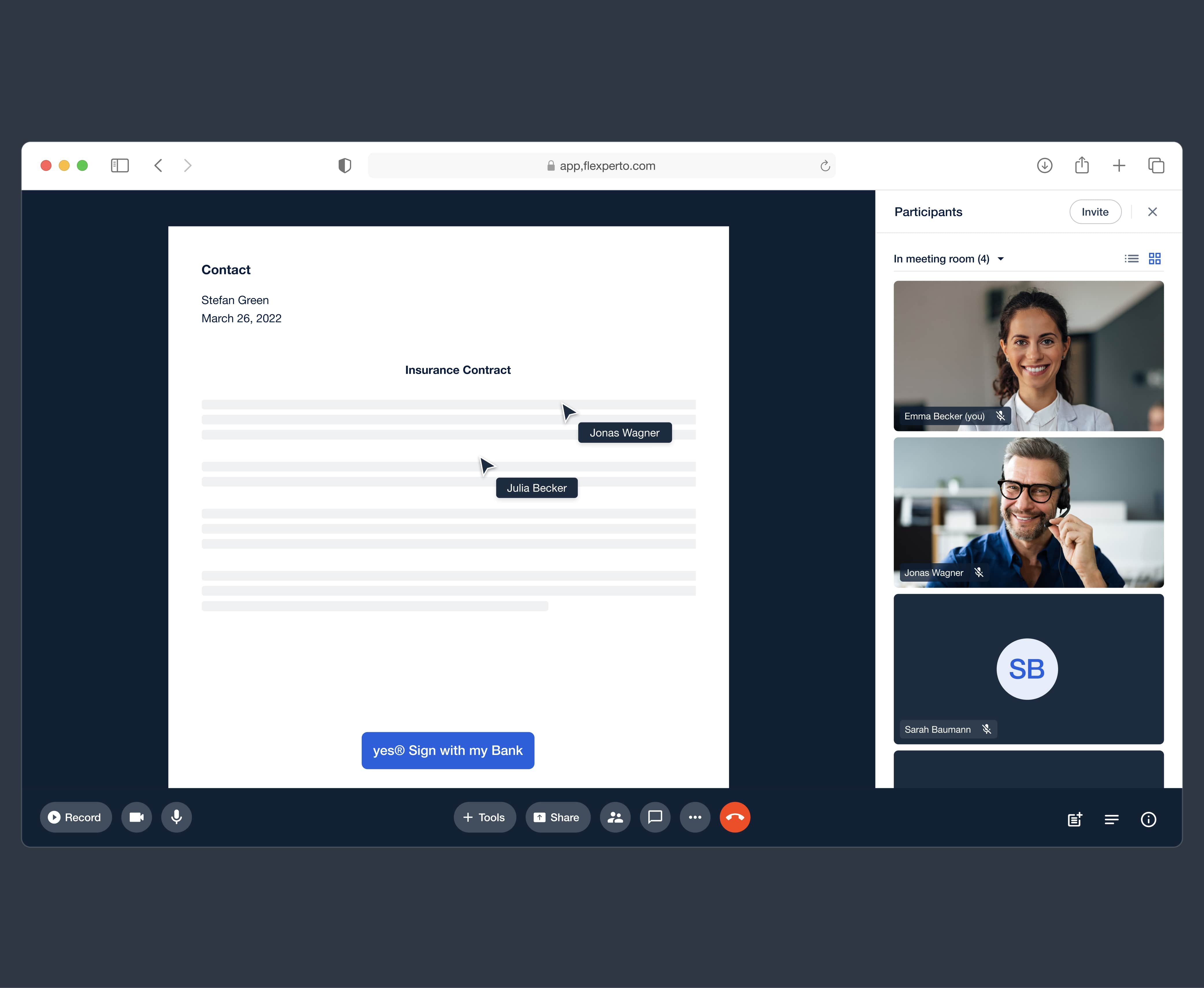
Once the expert uploads the file, the customers will be able to see and interact with it in real time using whiteboard.
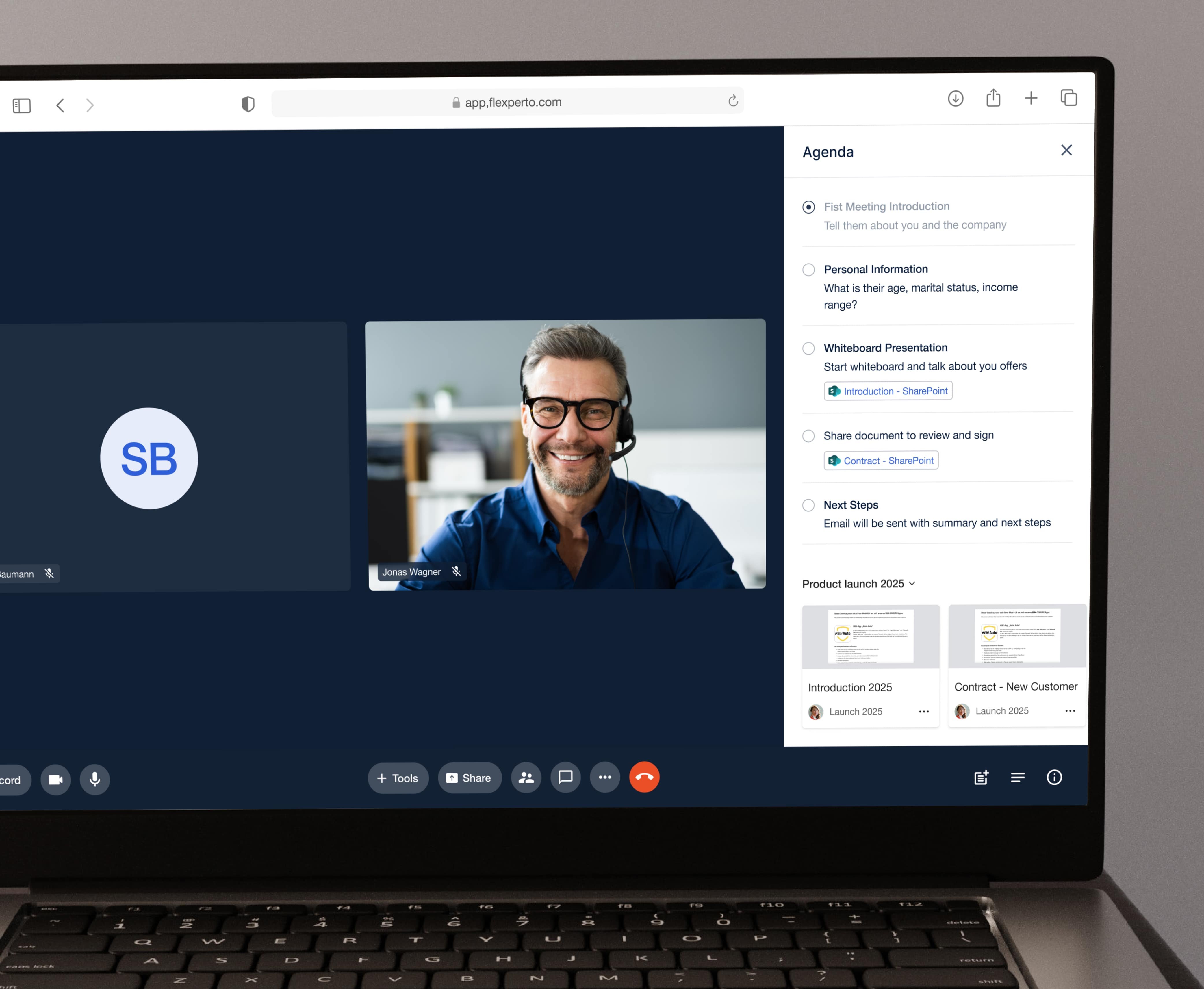
Experts can prepare the agenda beforehand, then interact with it live as seen in the visual above - checking off topics as they go to keep meetings structured and clear.
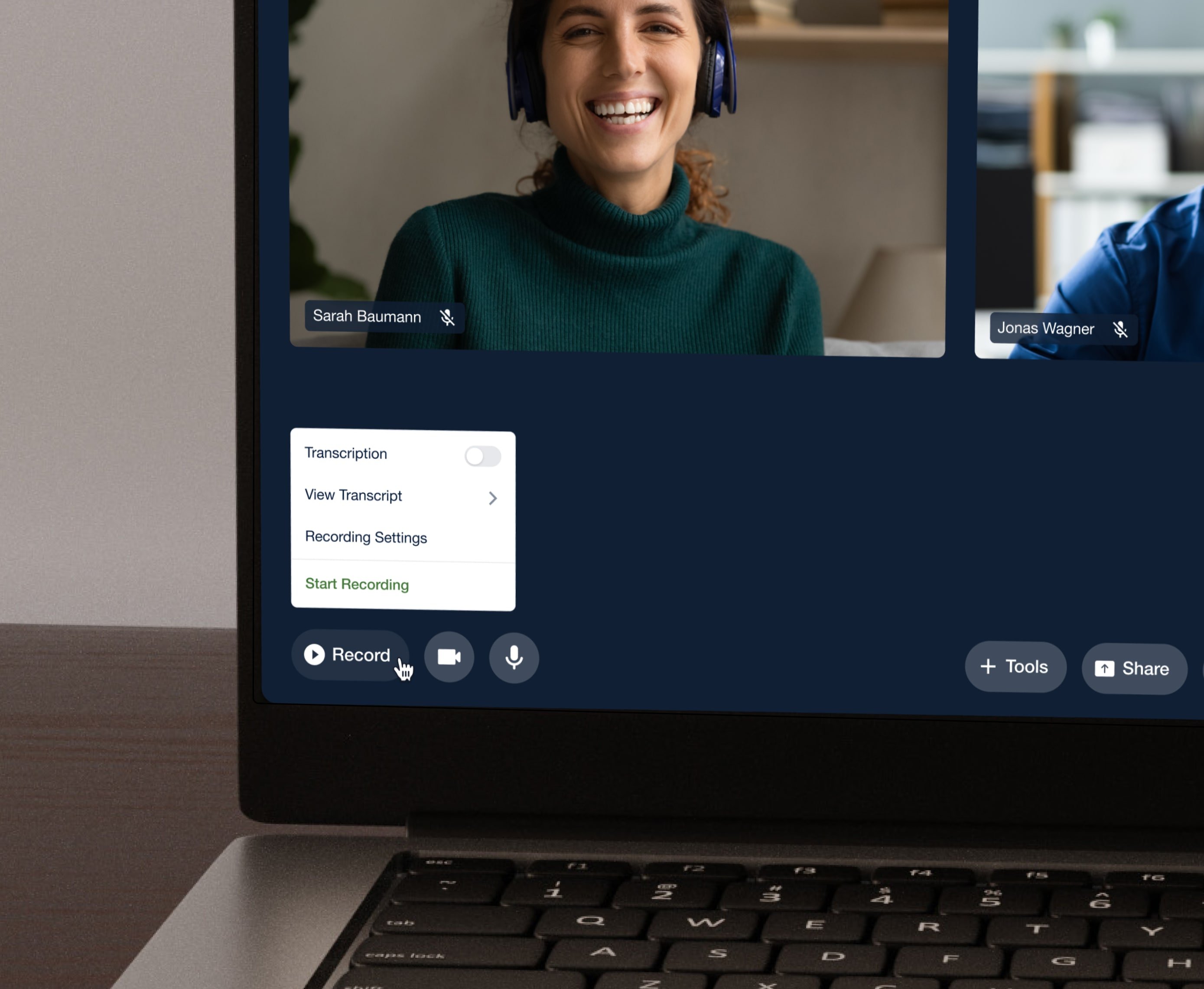
Transcription can be activated and reviewed easily from the new bottom navigation under “record”. Summaries and next steps are available right after the meeting has ended.
Other user needs that we took in consideration and I designed
- Whitelabeling. Users want the option to give their customers a fully branded, white-labeled meeting experience that feels professional and personalized, helping them maintain trust and credibility with their clients.
- Waiting room. Users need the ability to control when customers join the meeting and to personalize the waiting room message. → We also used the waiting room as an opportunity for experts to gather more information about the client before the meeting starts. Clients can answer key questions in advance, helping save time and allowing the meeting itself to focus on meaningful interaction.
- Post-meeting feedback. Our users wanted to receive feedback after meetings, as currently they have no indicators beyond contract signatures to measure success or improve their consultation skills. → This feature is part of a larger Insights dashboard, where experts can track their performance data and customize feedback questions to continuously improve their consultations.
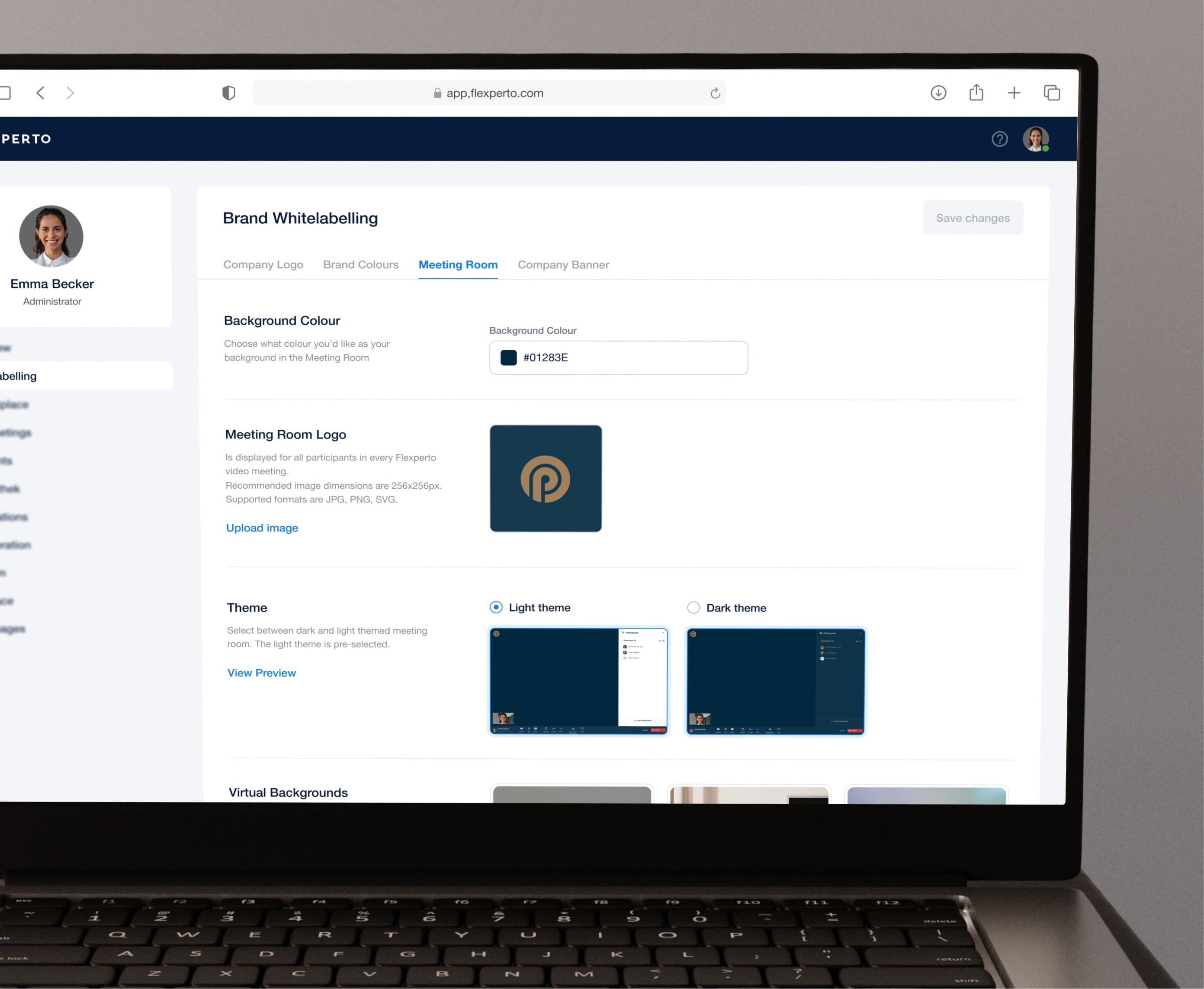
The expert or admin can change their whitelabelling for the meeting room in the settings.
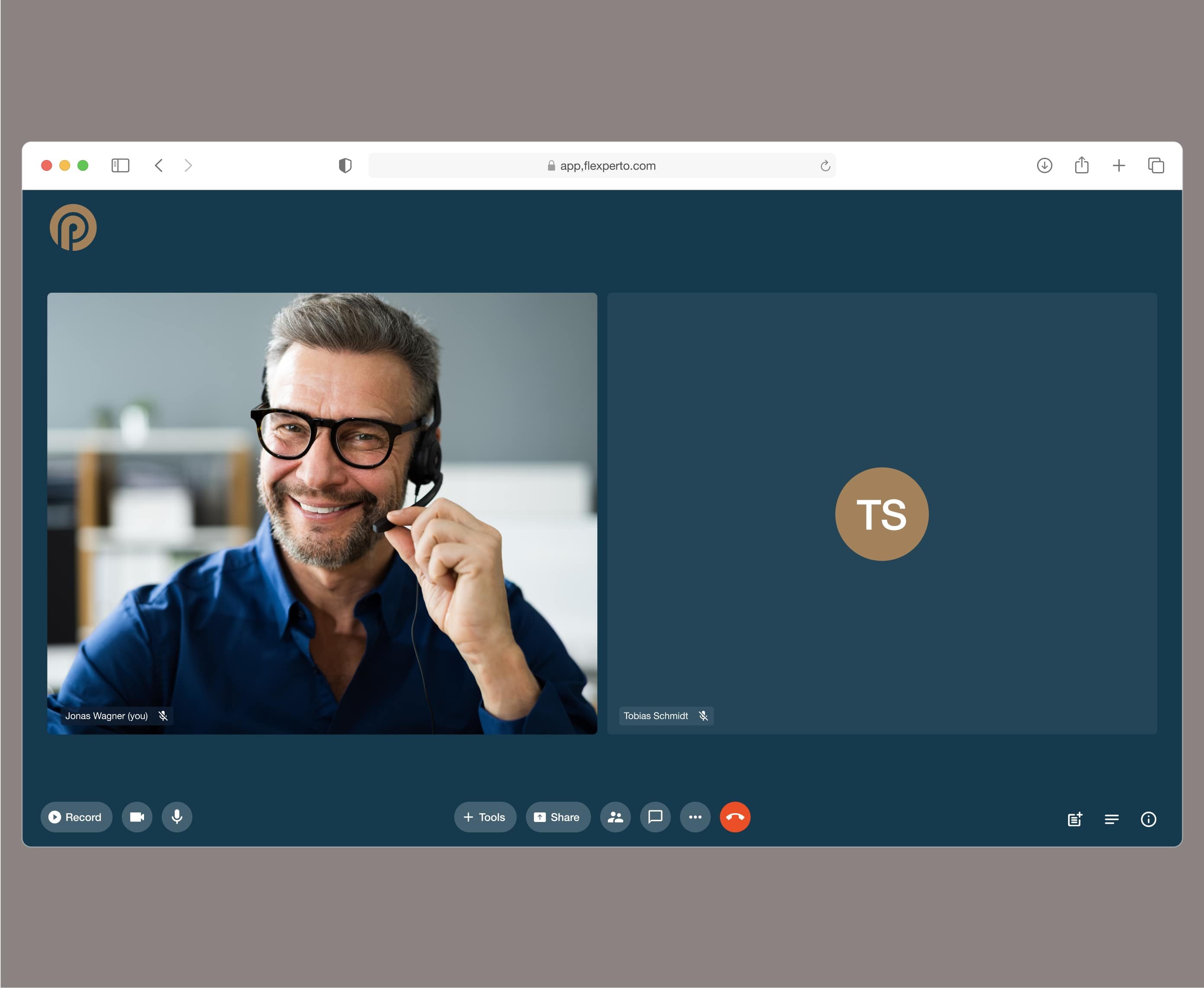
Once the background, logo, and theme are selected, the meeting room will reflect the company’s brand and convey its unique look and feel, rather than appearing generic.
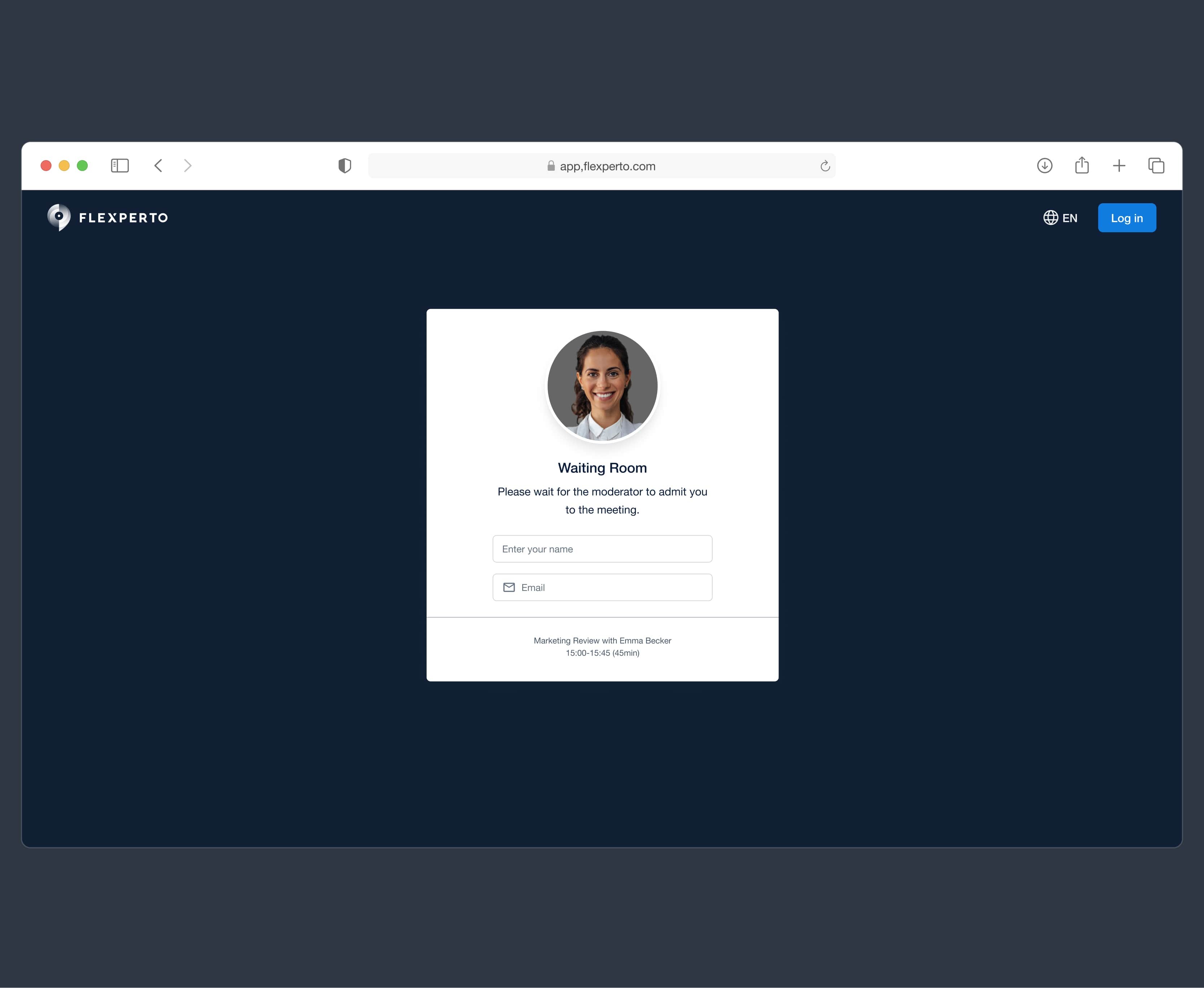
The customer view when joining a meeting if the waiting room feature is enabled.
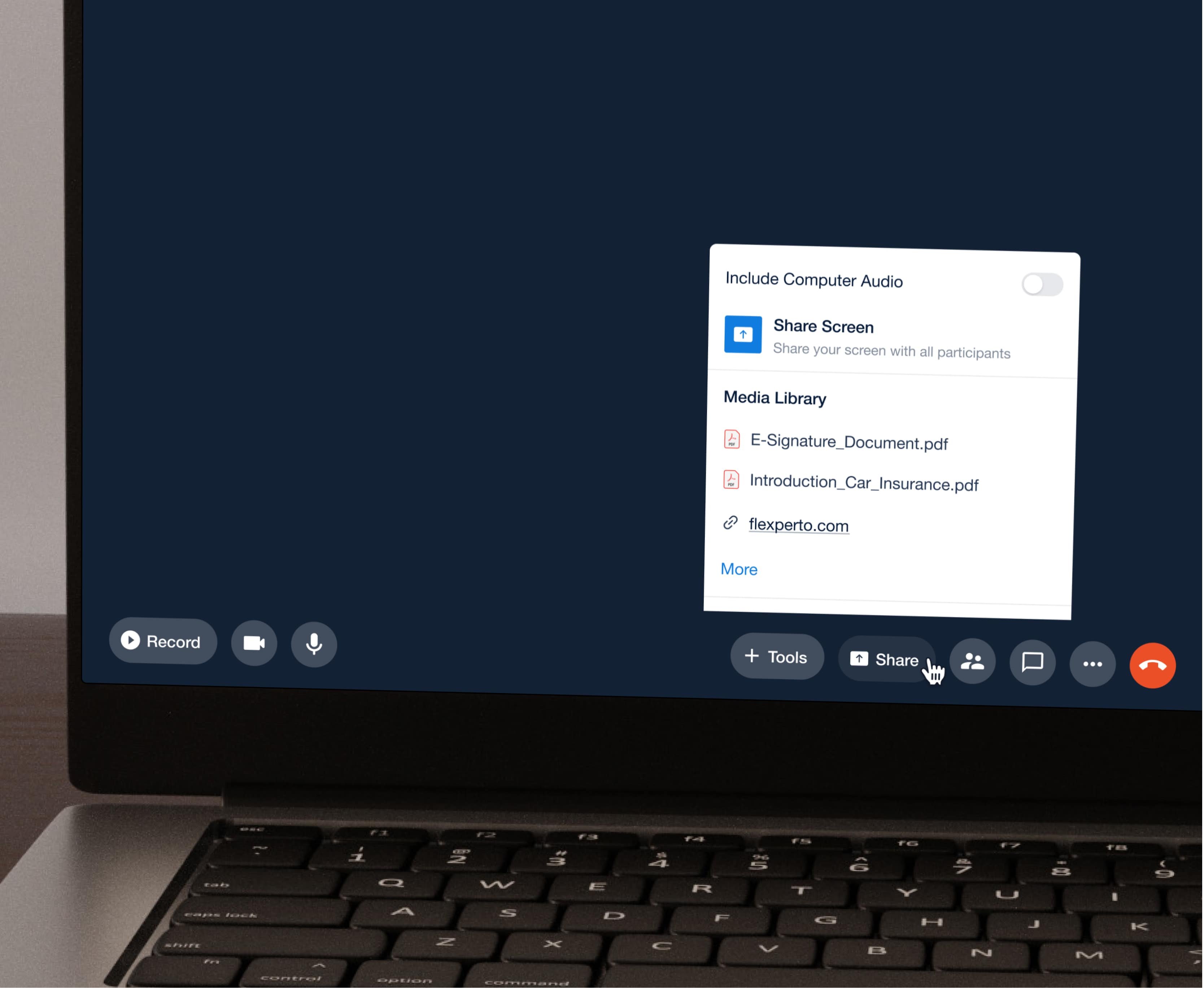
Improved bottom toolbar with hover states rather than using the "..." for all hidden features.
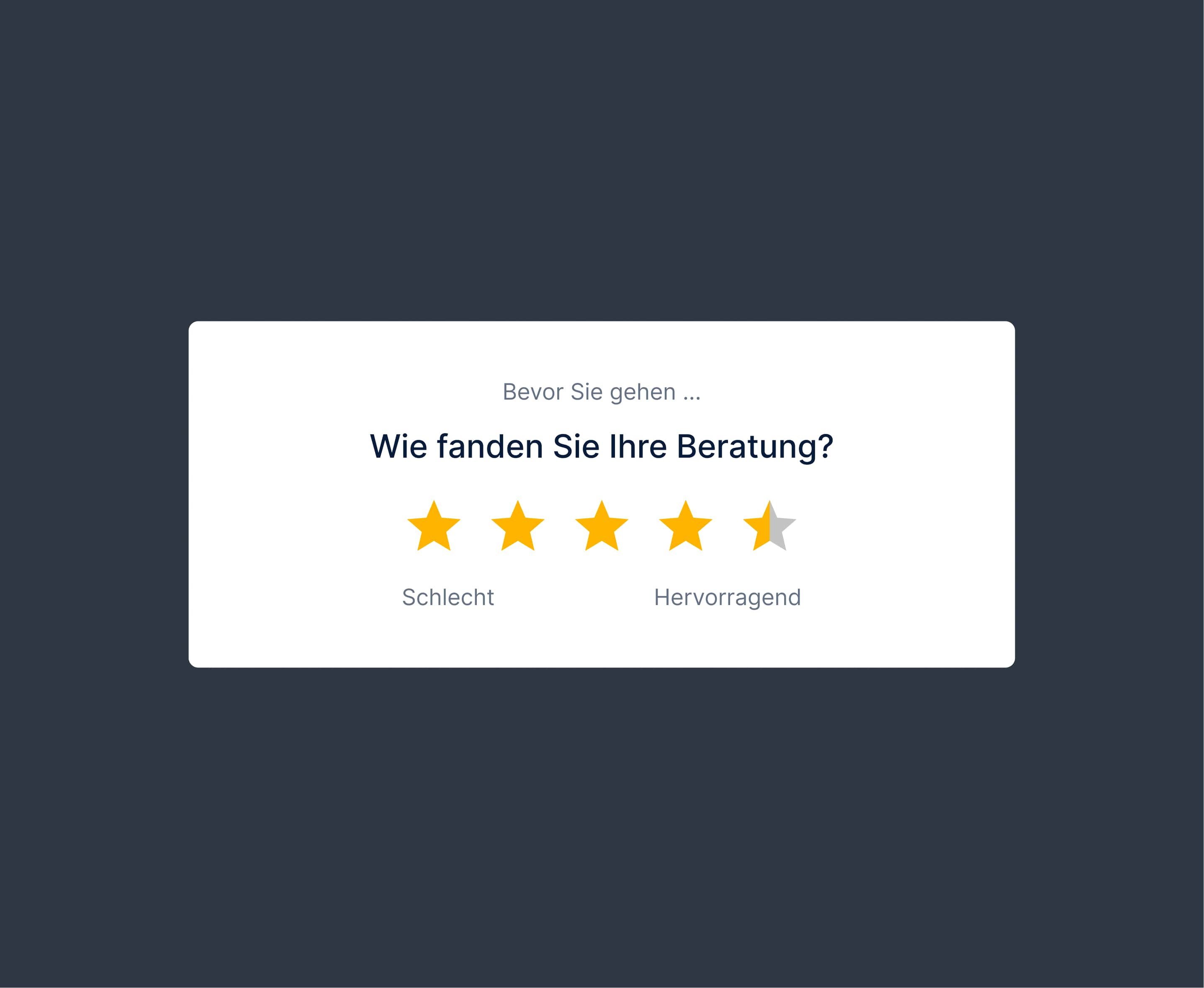
The customers are able to rate the expert after the meeting has ended. These ratings will be displayed on the expert profiles for other customers.
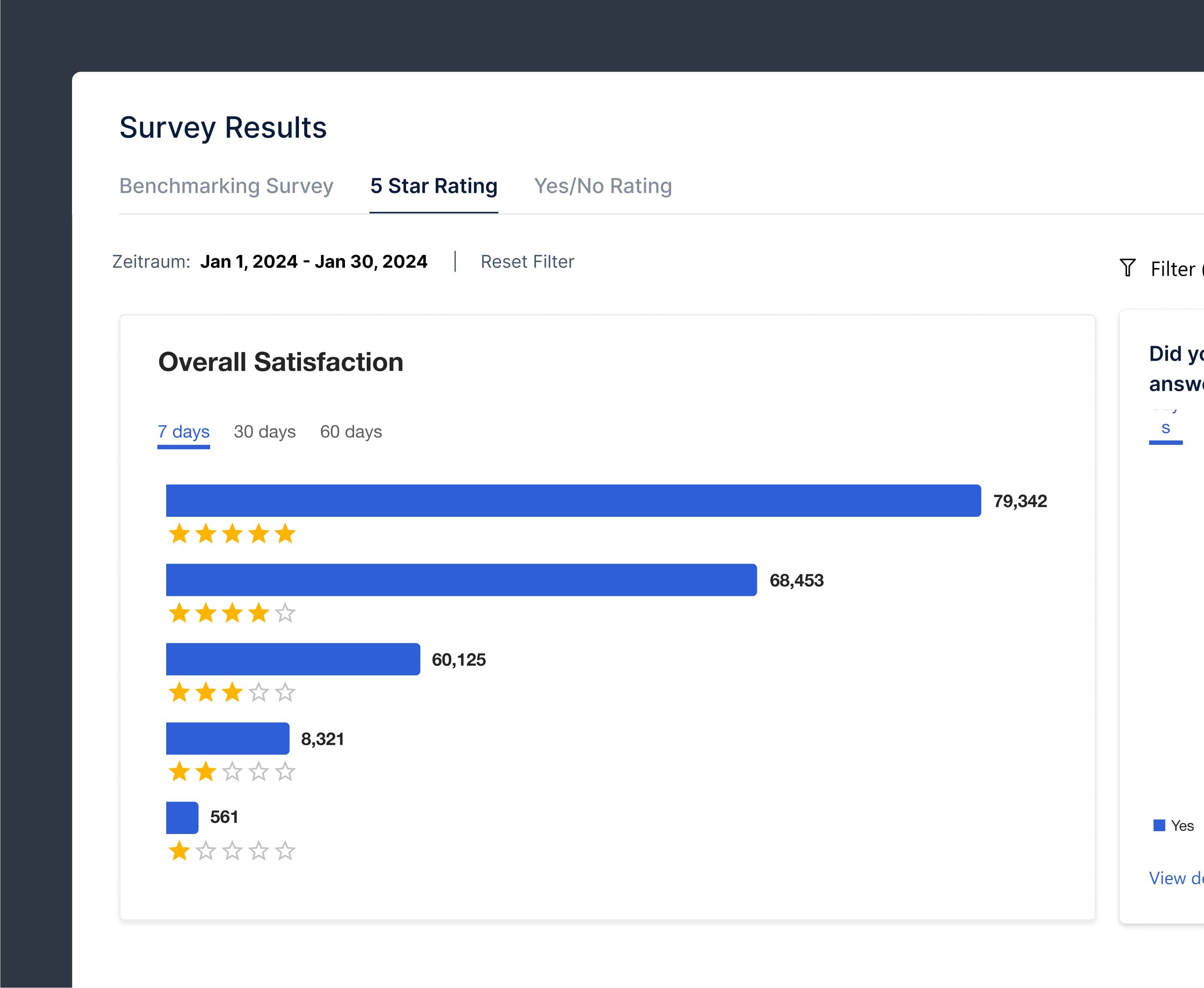
Real-time feedback dashboard for the expert to review their performance and give room to improve.
Things to keep in mind
Introducing new features or changing familiar workflows can be intimidating — especially for users who aren’t very tech-savvy, which describes most of our target audience. I wanted the transition to feel natural and stress-free, so new features were always optional and supported by clear tooltips and step-by-step guidance. This gave users the confidence to explore at their own pace and, hopefully, realize that once they tried the improvements, their days would be smoother and time would be saved.
Outcomes
- Positive early feedback: Customer calls indicate experts appreciate templates, automation, and AI documentation that streamline preparation and follow-up.
- The recent improvements led to an increase in user engagement, with 13.6% more users conducting online meetings on Flexperto within just a few months.
- Ongoing monitoring: We continue to track feature usage, efficiency, and adoption through Heap analytics to measure impact over time. Insights from analytics and feedback will guide further refinements, ensuring the meeting environment evolves with user needs.
